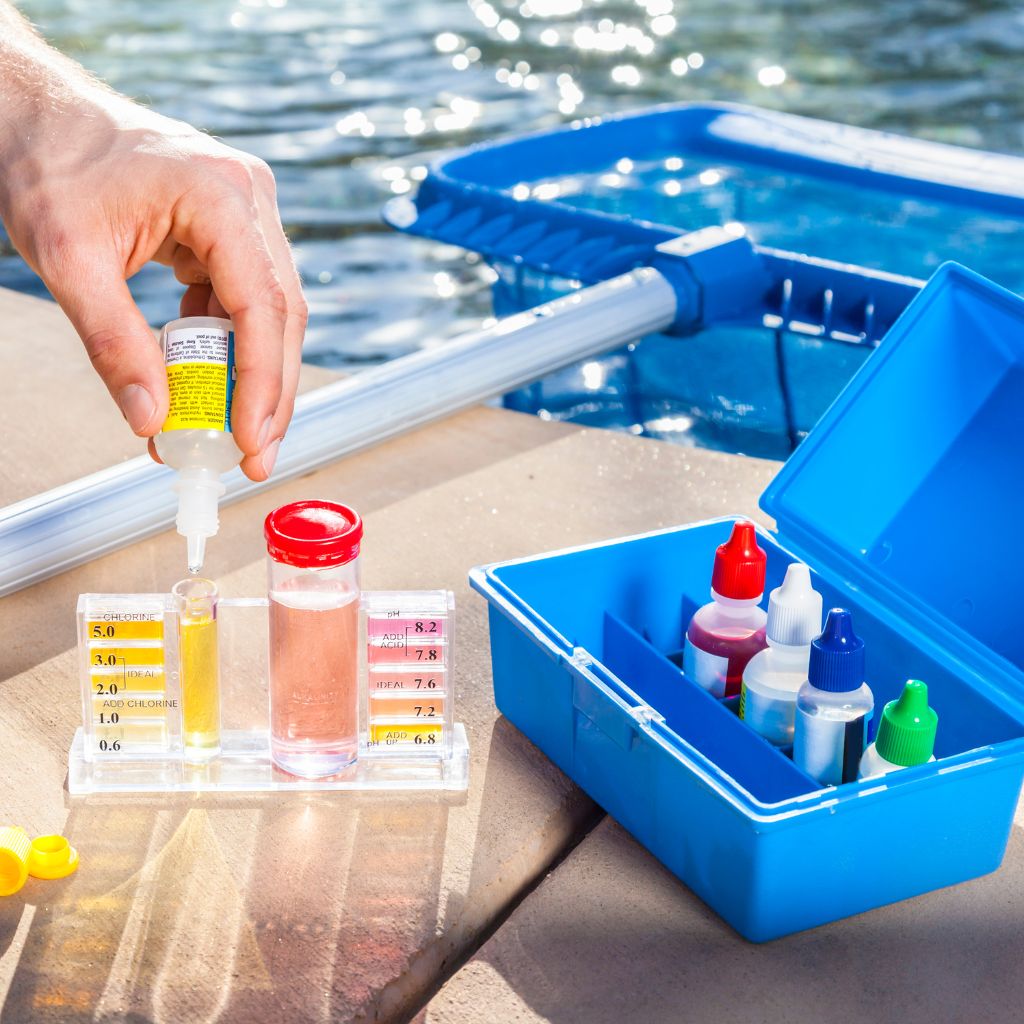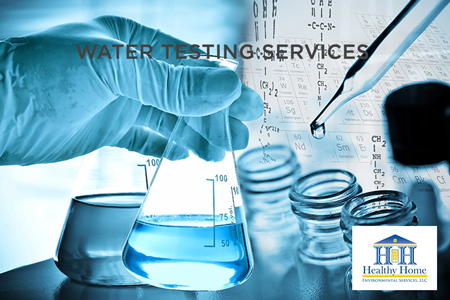Comprehensive Water Testing Services Orlando for Your Home's Needs
Comprehensive Water Testing Services Orlando for Your Home's Needs
Blog Article
Discover What Is Consisted Of in Water Evaluating and Just How It Guarantees Safe Alcohol Consumption Water
Understanding the intricacies of water screening is critical in guaranteeing the top quality and security of our drinking water. Through a careful examination of physical, chemical, and microbiological elements, water screening identifies prospective impurities that can posture wellness risks. From the presence of hefty steels to hazardous microbes, each test part plays a vital role in maintaining the stability of our supply of water. Advanced techniques like chromatography and spectrometry enhance the accuracy of these evaluations. Exactly how do these procedures equate right into the regulatory structures that assure security in our everyday intake?
Trick Components of Water Testing
Water screening is a critical process that includes numerous crucial elements to make certain the security and quality of alcohol consumption water. Additionally, making certain the pH balance of water is vital, as it impacts the water's corrosiveness and the efficacy of sanitation processes.
Another considerable element involves microbiological analysis, where water samples are analyzed for the existence of bacteria such as microorganisms, infections, and protozoa. If consumed, this evaluation is essential to recognize organic threats that can pose health threats. Moreover, chemical analyses are carried out to find natural and not natural compounds, such as hefty steels, nitrates, and pesticides, that could be existing in the water system.

Spotting Hazardous Contaminants
Discovering unsafe impurities in drinking water is a basic element of securing public health. This process includes recognizing possible risks that can endanger the top quality and safety and security of water materials. Contaminants can range from microorganisms such as bacteria, infections, and protozoa, to inorganic compounds like lead, arsenic, and nitrates, along with organic toxins including pesticides and industrial chemicals. Each sort of impurity poses distinctive health dangers, making their discovery crucial to ensure the water taken in by the public is risk-free.
Water testing for pollutants is normally performed by regulatory firms and water utilities, utilizing a mix of field sampling and lab analysis. These evaluations are designed to identify both normally taking place materials and anthropogenic pollutants that might have entered the water through agricultural drainage, industrial discharge, or aging facilities. Normal monitoring is crucial, as contamination levels can change as a result of ecological modifications, seasonal variations, or human tasks.
The recognition of damaging contaminants notifies necessary actions, such as water treatment interventions or public advisories, to minimize dangers. Early discovery is essential to avoid negative health impacts, ranging from gastrointestinal health problems to long-lasting conditions like cancer cells, thereby making sure the continued safety and security of alcohol consumption water.

Chemical Analysis Methods
In the world of making certain risk-free drinking water, chemical evaluation methods play a pivotal role in determining and measuring contaminants. These methods are essential for spotting a vast selection of chemical compounds, including hefty metals, chemicals, and commercial pollutants, which can pose considerable health risks. Strategies such as atomic absorption spectroscopy (AAS) and inductively combined plasma mass spectrometry (ICP-MS) are commonly used to measure trace levels of metals like mercury, lead, and arsenic. These tools supply precise metrology, promoting compliance with regulatory criteria.
Gas chromatography-mass spectrometry (GC-MS) is another vital method, specifically for natural compounds. It separates complex blends and determines semi-volatile and unstable natural compounds, guaranteeing that toxins like benzene and toluene are within secure limits. High-performance liquid chromatography (HPLC) is in a similar way made use of for non-volatile materials, consisting of specific chemicals and drugs.
Ion chromatography is employed to establish concentrations of cations and anions, such as nitrates and sulfates, which are crucial in assessing water quality. These chemical analysis strategies collectively ensure that alcohol consumption water visit this web-site continues to be safe by discovering discrepancies from established pureness standards, therefore protecting public health and wellness. Making sure accuracy and accuracy in these examinations is vital to maintaining the integrity of water safety and security analyses.
Microbiological Examining Techniques
Accurate microbiological testing is critical for protecting public health and wellness by ensuring that alcohol consumption water is without damaging virus. This procedure involves identifying and mentioning bacteria such as microorganisms, viruses, and protozoa that may contaminate water supplies. Common virus include Escherichia coli, Giardia, and Cryptosporidium, each posturing considerable wellness threats.
A number of approaches are used in microbiological testing to recognize these risks. The membrane layer filtration technique is frequently used, entailing water travelling through a filter that records bacteria, which are then cultured to determine their existence and concentration. Alternatively, the multiple-tube fermentation approach makes it possible for the quantification of coliform germs utilizing a collection of dilution and incubation steps.
Advancements in technology have introduced molecular techniques such as polymerase chain reaction (PCR), which permits the extremely specific and quick detection of microorganisms by magnifying their genetic material. Enzyme-linked immunosorbent assays (ELISA) also supply an approach to identify microorganisms by recognizing certain healthy proteins or antigens.
These varied methods are vital for extensive water high quality evaluation, making sure that water treatment processes work which circulation systems maintain safety. By using these microbiological testing methods, prospective carcinogen can be identified and alleviated without delay.

Significance for Public Health
Making sure the microbiological security of drinking water directly affects public health and wellness by stopping the spread of waterborne conditions. Virus such as bacteria, infections, and protozoa can bring about diseases like cholera, dysentery, and intestinal infections (Water Tesing Services Orlando). The execution of detailed water screening methods is critical in recognizing and reducing these risks, therefore protecting areas from prospective outbreaks
Regular water screening not just spots microbial impurities yet also evaluates chemical and physical specifications that might impact health. Too much levels of nitrates or hefty metals such here are the findings as lead can present serious health and wellness threats, particularly to prone populaces like infants and expecting ladies. By recognizing these risks early, water screening makes it possible for timely interventions, making certain the supply of water stays within secure consumption criteria.
In addition, water testing plays a critical role in preserving public self-confidence in metropolitan water supply. It provides transparency and responsibility, reassuring the public that their health and wellness is a top priority. For plan makers and health and wellness officials, the information originated from water testing informs decisions on facilities financial investments and public wellness strategies, guaranteeing resources are guided where they are most required. In this method, water screening is crucial in promoting a healthier, safer society.
Conclusion
Water testing acts as an important system for making certain the safety and quality of alcohol consumption water through comprehensive examination of its physical, chemical, and microbiological residential properties. By discovering damaging pollutants, such as heavy steels and chemicals, and using advanced techniques like chromatography and spectrometry, water screening promotes the identification of potential health threats. The application of extensive testing methods is crucial for preserving compliance with safety and security standards, eventually securing public health and wellness and enhancing confidence in municipal water systems.

By determining these hazards early, water testing allows prompt treatments, ensuring the water supply stays within secure consumption requirements.
Water screening offers as a necessary system for making sure the safety and security and quality of drinking water through extensive examination of hop over to these guys its physical, chemical, and microbiological properties.
Report this page